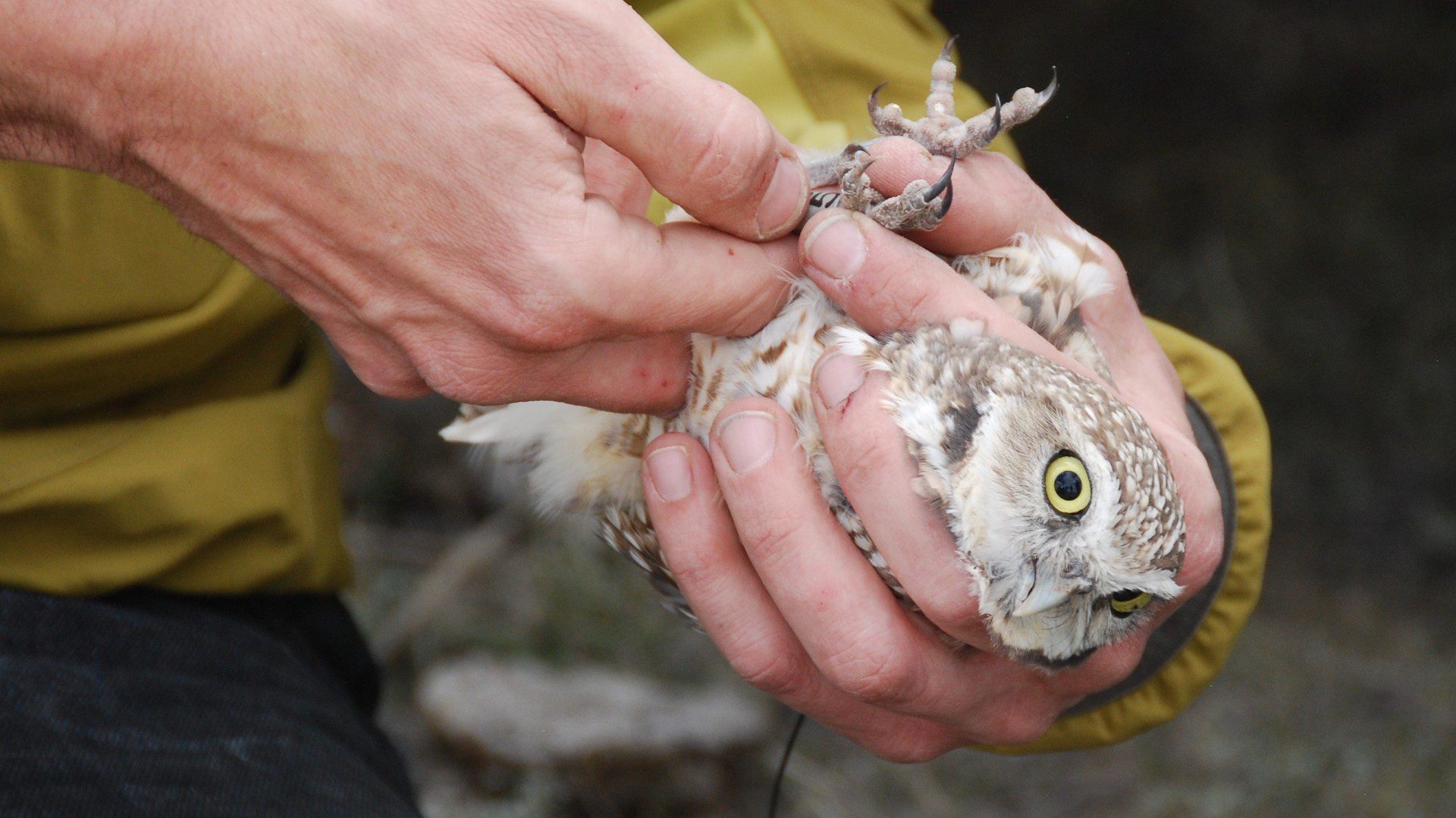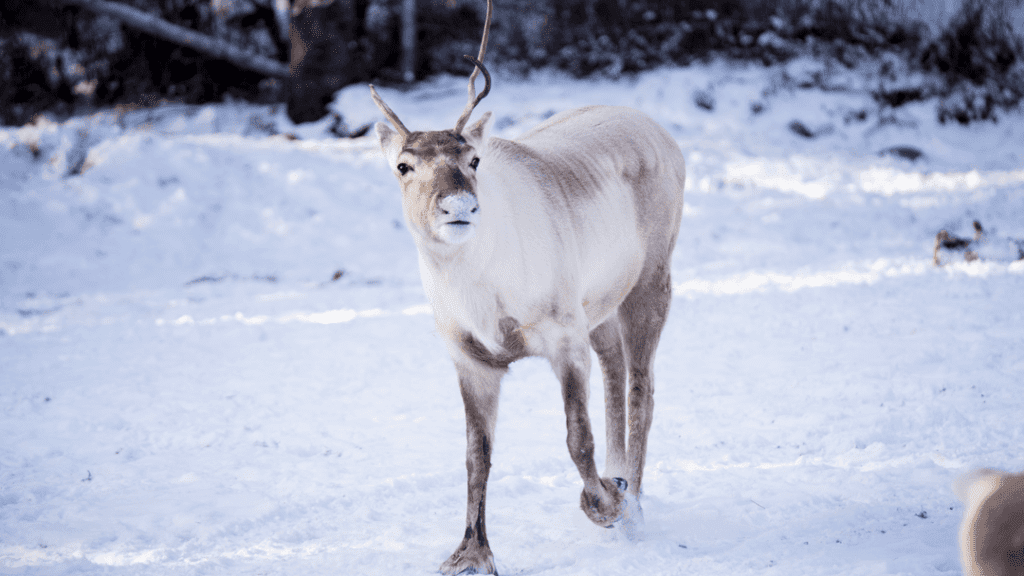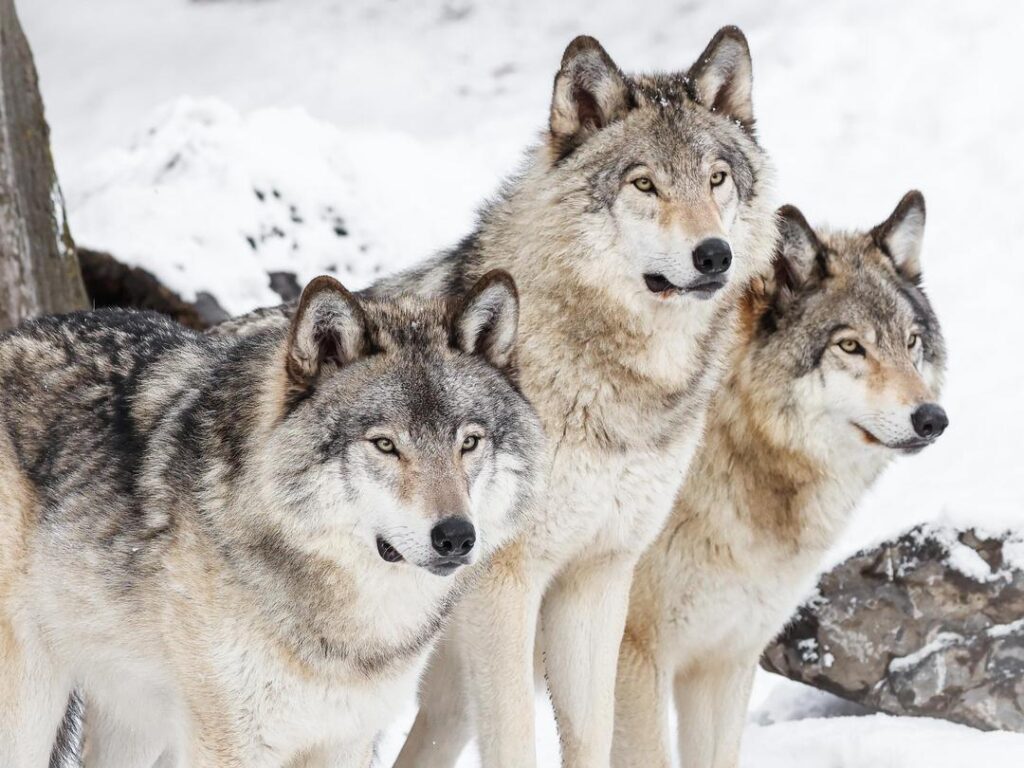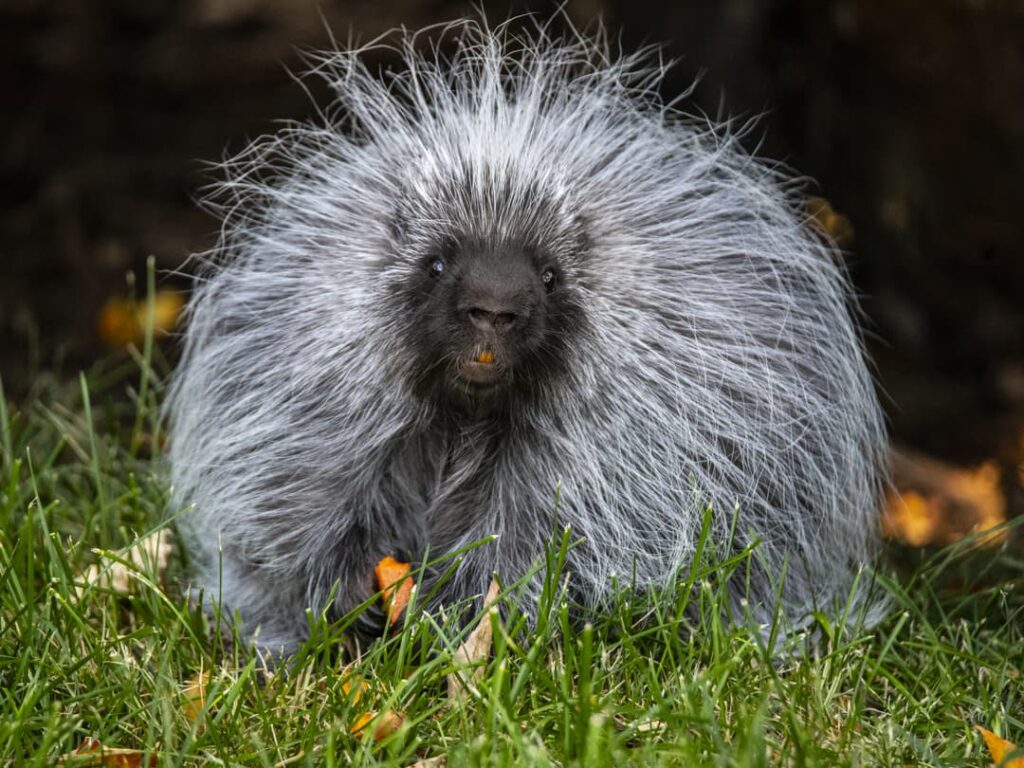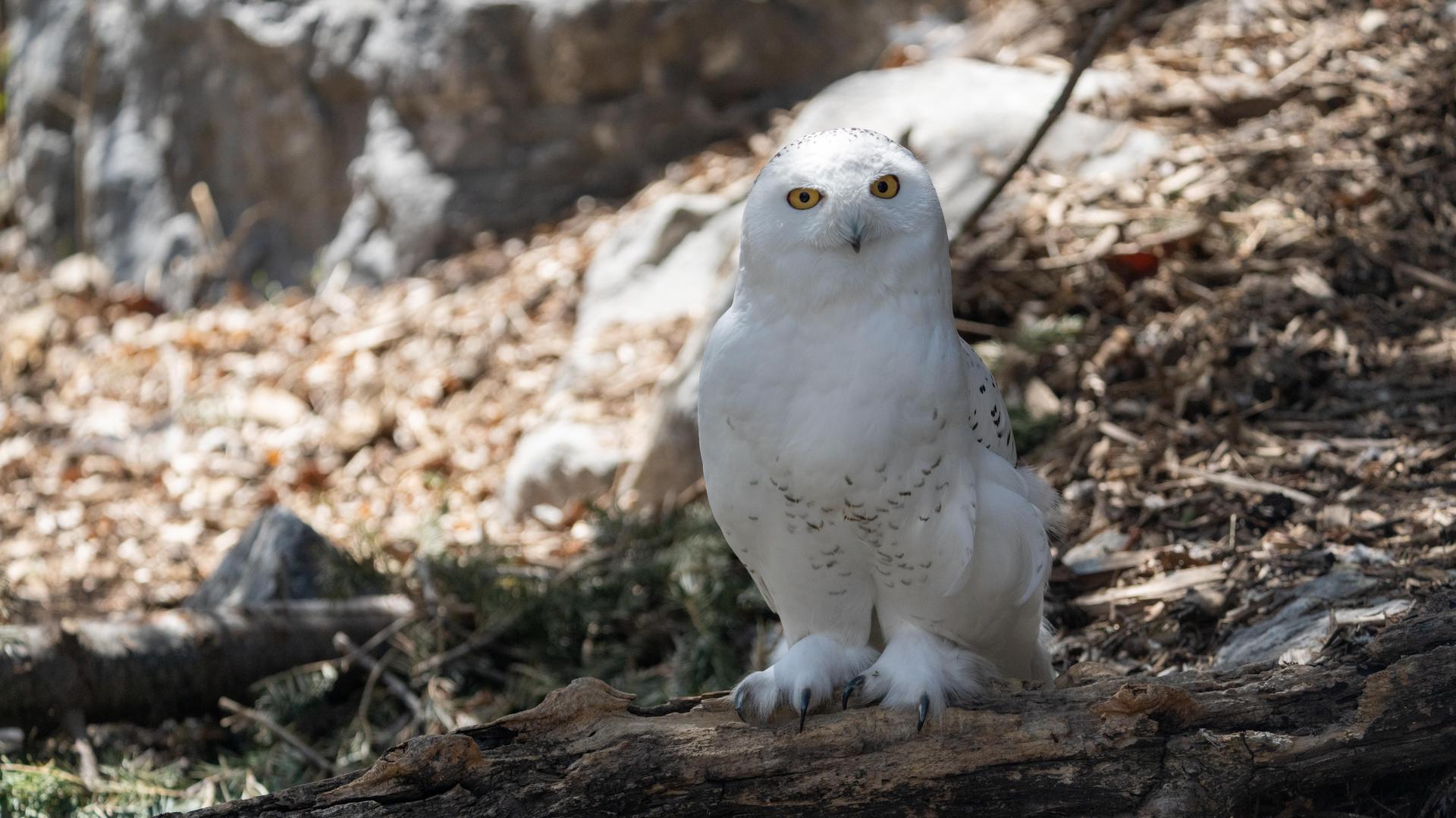
Snowy Owls
An icon of the Arctic
True to their name, snowy owls are often hard to spot against the snow, but it might surprise you that both males and females have brown markings, though they are more extensive on a female. Not only does a snowy owl’s plumage help it blend into its landscape, but it also helps them to stay warm in temperatures as low as minus 50 degrees Celsius. Unusually among owls, the snowy owl hunts both day and night.
- IUCN Red List Status: Vulnerable (at high risk of extinction in the wild)
- Type: Bird
- Habitat: Tundra of North America, Europe, and Asia
- Diet: Carnivore – lemmings, rabbits, and birds
- Size: 20 to 28 inches, 4.2 to 4.8 feet wingspan
- Weight: 3.5 to 6.5 pounds
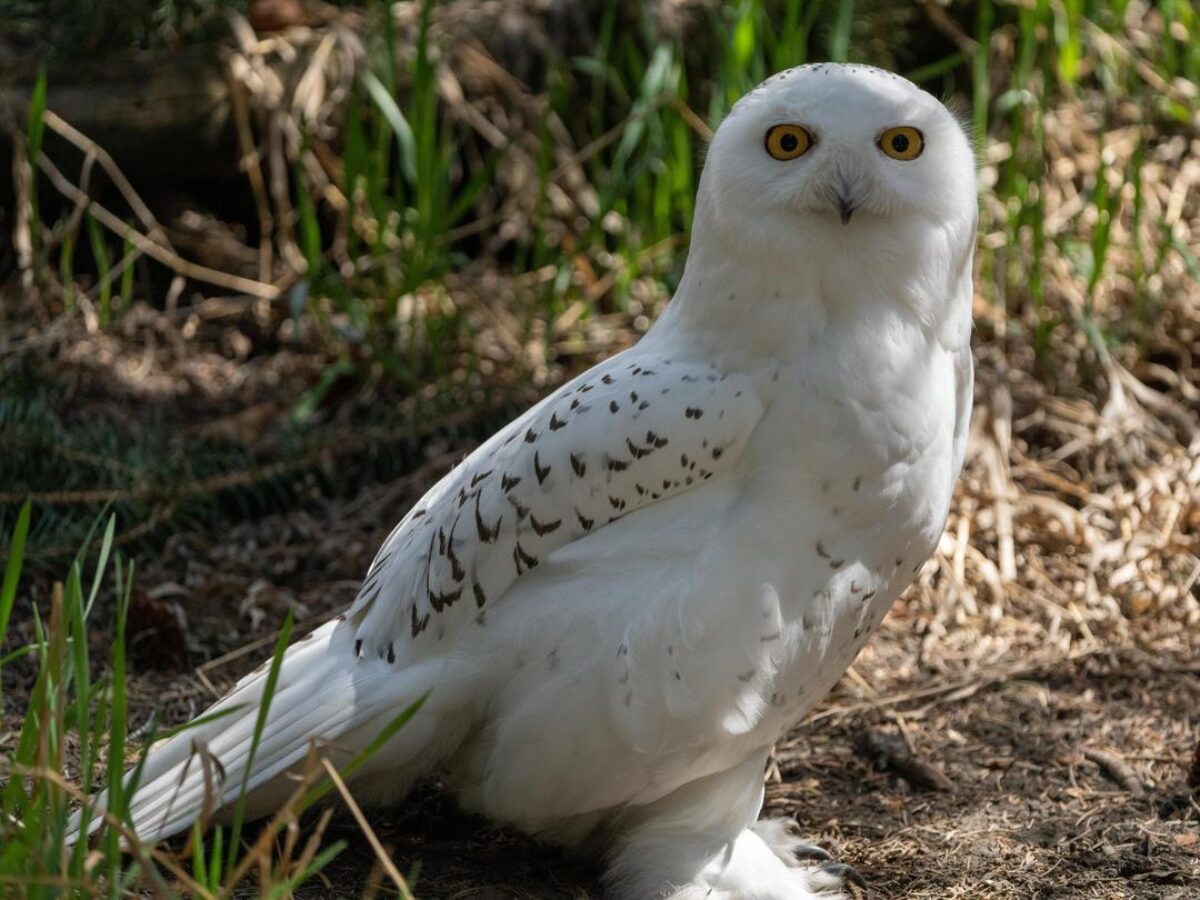
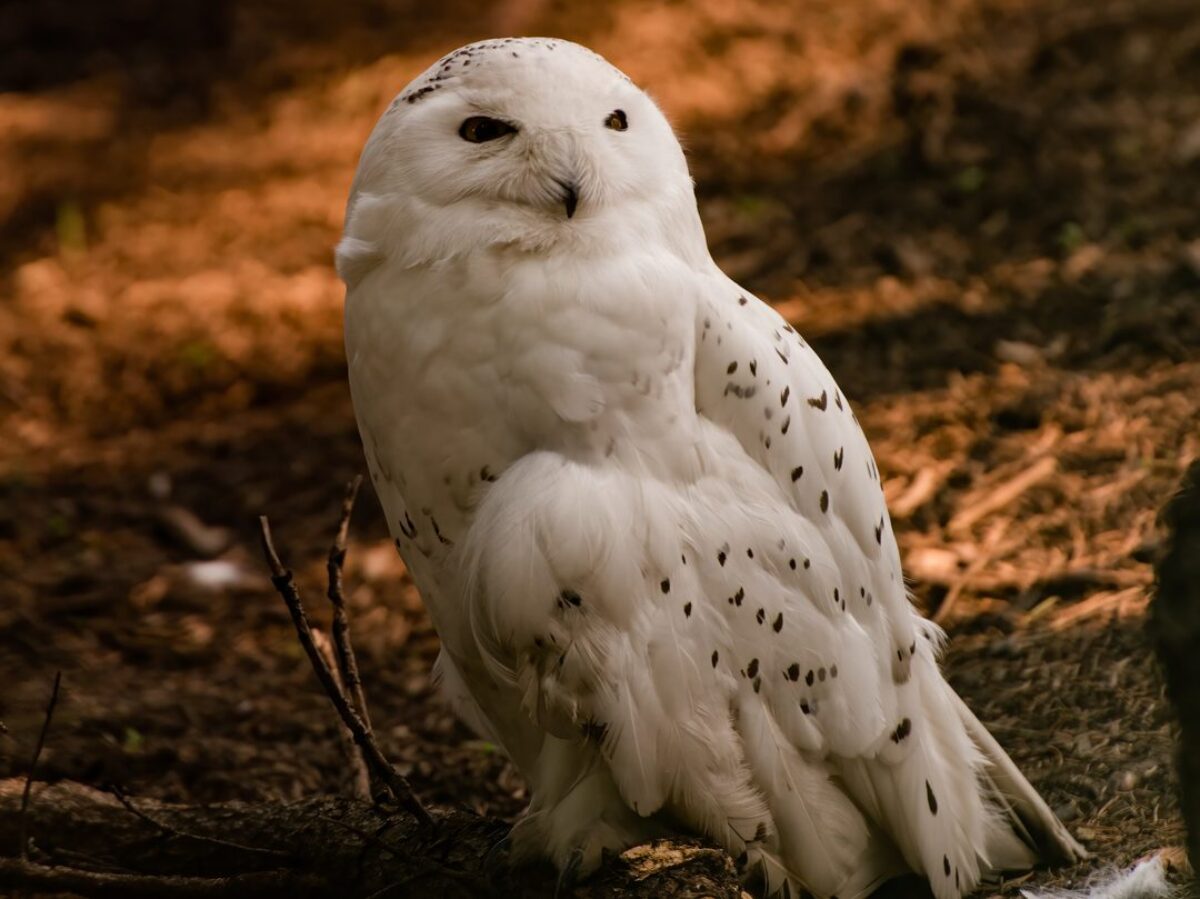
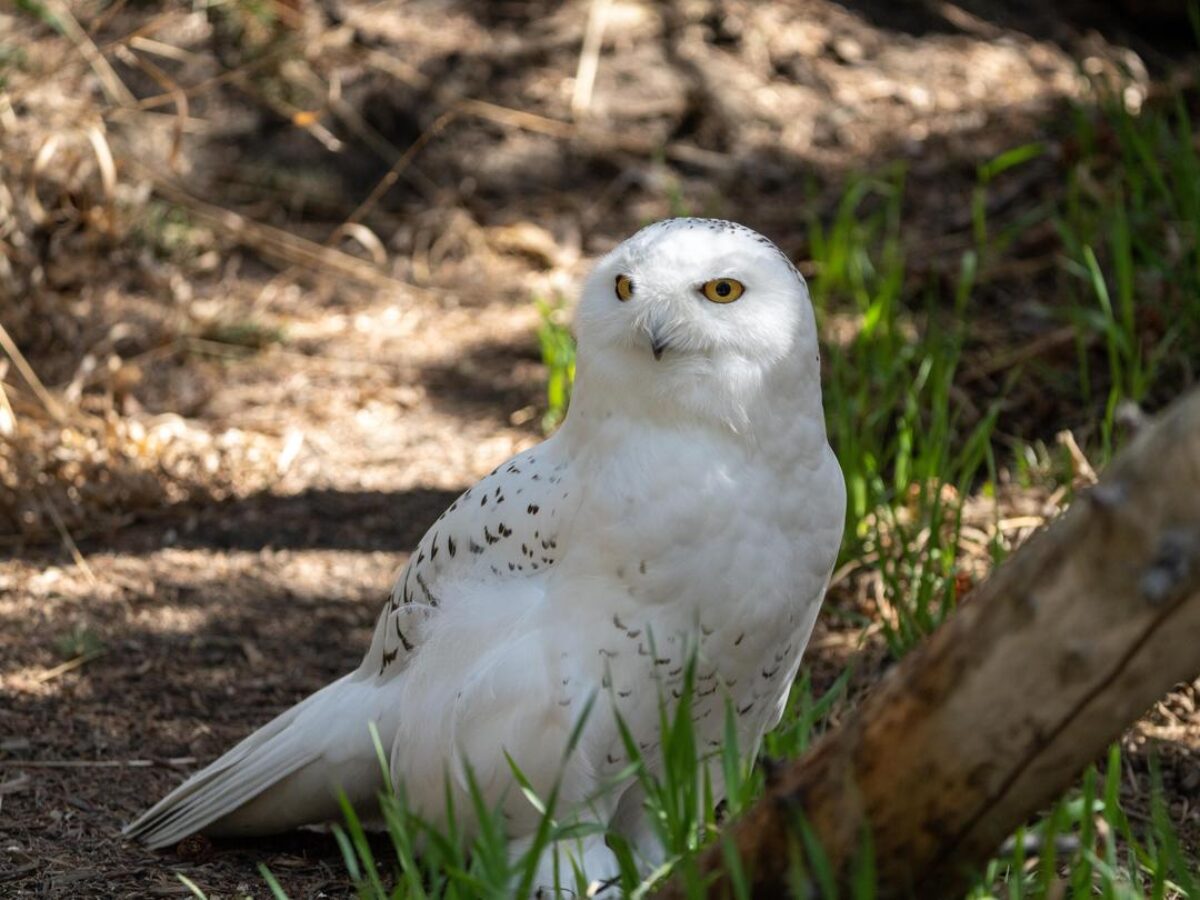
facts about our animals
Fun Facts about Snowy Owls
The circle of feathers around its eyes help it to reflect sound to its ears.
Both males and females grow whiter as they age.
A snowy owl hunts by flying low and then snatching prey up into the air.
Snowy owls have excellent eyesight, spotting mice over 300 feet away from them
Snowy owls are opportunistic hunters and have been known to hunt fish, waiting at holes in the ice for prey.
During the continuous daylight of an Arctic summer, a snowy owl will hunt at all hours.
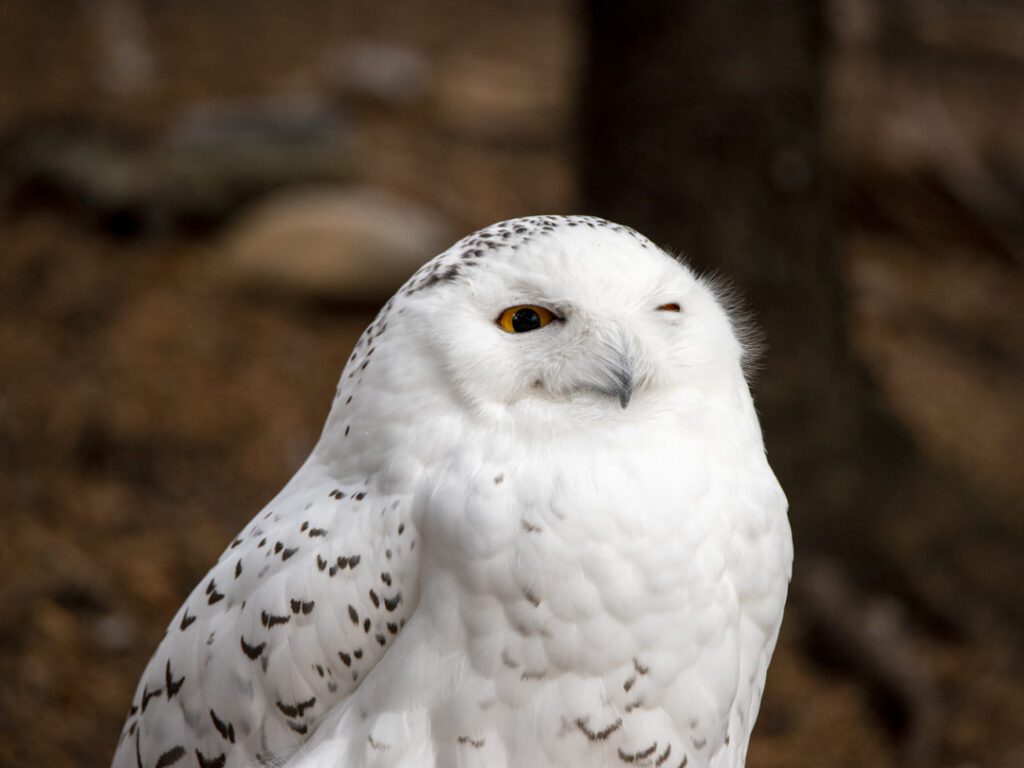
Donate
How you can help
Your donation makes a world of difference. With support for animal care, conservation programs, and education, you’re making the world wilder.

Plan Your Visit
Get close to wildlife
It’s time to make some memories. Here’s everything you need to know to plan an unforgettable day at the zoo.
